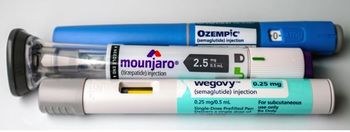
Bug-Killing Chemicals Linked to Parkinson's in Men
ROCHESTER, Minn. ? Men exposed to pesticides on the farm or elsewhere have more than double the risk of developing Parkinson's disease as do men who avoid pesticide exposure or women, according to Mayo researchers.
ROCHESTER, Minn., June 15 ? Men exposed to pesticides are more than twice as likely to develop Parkinson's disease as are men who have managed to avoid contact with the toxic chemicals, according to Mayo Clinic researchers.
The risk for Parkinson's from pesticide exposure was equally high among farmers and non-farmers reported Walter A. Rocca, M.D., M.P.H., and Mayo Clinc colleagues in early online version of Movement Disorders. There was no elevated risk associated with exposure to any of six other categories of household or industrial chemicals.
There was no association between pesticide exposure and Parkinson's disease in women, but women in general had significantly less opportunity for exposure at to pesticides than men, the investigators noted.
"The cause of Parkinson's disease remains unknown," they wrote. "The role of environmental factors has been considered, in particular in late onset cases. Several studies have reported associations of Parkinson's disease with pesticides and other chemical products such as metals, solvents, paints, glues, and printing chemicals. However, other studies have failed to confirm these associations."
To determine whether there is indeed a pesticide-Parkinson's link, they conducted a population-based case-control study of all residents of Olmsted County, Minn., who developed Parkinson's from 1976 through 1995.
They identified 202 county residents with Parkinson's diagnosed over the two decades, and matched them by age and gender with controls from the general population of the same county who were free of parkinsonism or tremor of any type in the year that their matched cases developed Parkinson's disease.
The investigators determined chemical exposure by interviewing the patients or their proxies. The interviewers were not told whether they were contacting cases or controls, and the participants were not told the hypothesis of the study to help reduce the chance of interview and recall bias.
The interviewees were asked whether they have ever been exposed through work or recreation to chemicals in any of seven broad classes:
- Insecticides and herbicides
- Paints, varnishes, and stains
- Cleaning products
- Gasoline and petroleum derivatives
- Asbestos
- Glues
- Printing products
All of the participants who had farmed for at least five years were asked additional detailed questions about the main types of crops, their use of pesticides, and the names of the specific products they used.
Participants who had never farmed or farmed for less than five years were considered to have been exposed if they reported the use of pesticides in response to general questions about chemical exposures in jobs or hobbies.
Among the 149 of 202 patients identified for whom interviews could be completed, the median age at onset of Parkinson's was 70 years (range 41-97) and 60% were men. Of the 202 controls, 129 were available for interviews.
The authors found that after combining pesticide exposures related to farming with exposures related to other occupations (such as landscaping) or to hobbies (such as gardening), there was a significant association for men but not for women.
The odds ratio was 2.4 (95% confidence interval, 1.1-5.4, P=0.04), and it remained significant after controlling for smoking, with and odds ratio of 2.5 (95% CI, 1.1-5.7, P=0.03) and for education, divided into quartiles, with an odds ratio of 2.8 (95% CI, 1.2-6.5, P=0.02).
In contrast, "analyses for the other six categories of common chemical exposures that occurred as part of an occupation or of a hobby, showed non-significant associations in either direction," the authors wrote.
"This population-based study suggests a link between pesticides use and Parkinson's disease that is restricted to men," they wrote. "Pesticides may interact with other genetic or nongenetic factors that are different in men and women."
They found that pesticide exposure was similar among controls between men and women, whereas in the Parkinson's cases men had significantly more farm and non-farm exposure to pesticides than women. A similar association between insecticide exposure and Parkinson's disease in men but not in women was seen in a French study, the authors noted.
There are a number of limitations to the study, which were noted by the authors:
- The sample size was too small to detect weak associations, and several analyses involved a small number of subjects.
- Because several statistical tests of association were conducted, it is not possible to exclude that the findings for men were due to chance (type 1 error).
- Proxy interviews were used more frequently for cases (67%) than for controls (51%), because patients with Parkinson's have an increased mortality and an increased frequency of cognitive decline, and may be frail in the advanced stages of Parkinson's. This asymmetry in type of informant may have introduced an imbalance in data quality.
- A direct validation of chemical exposure was not possible in this study; exposure to chemicals was not defined using a job-exposure matrix methodology. In addition, it was not possible to quantify the level of exposure or the lifelong cumulative dose of exposure.
For these reasons, they suggest that "our findings should be interpreted with caution and should be replicated in independent studies."
Newsletter
Enhance your clinical practice with the Patient Care newsletter, offering the latest evidence-based guidelines, diagnostic insights, and treatment strategies for primary care physicians.































































































































































































































































































